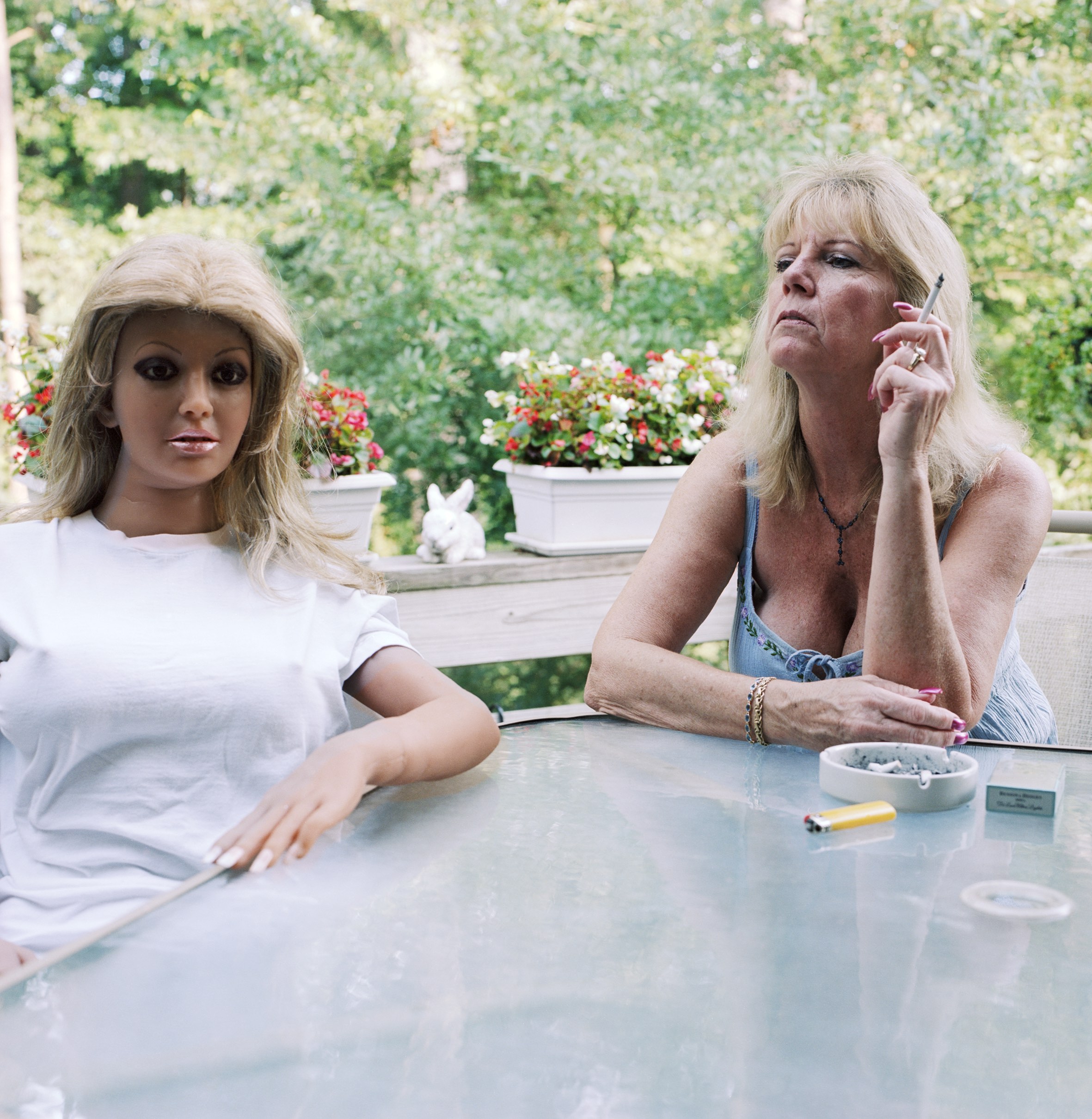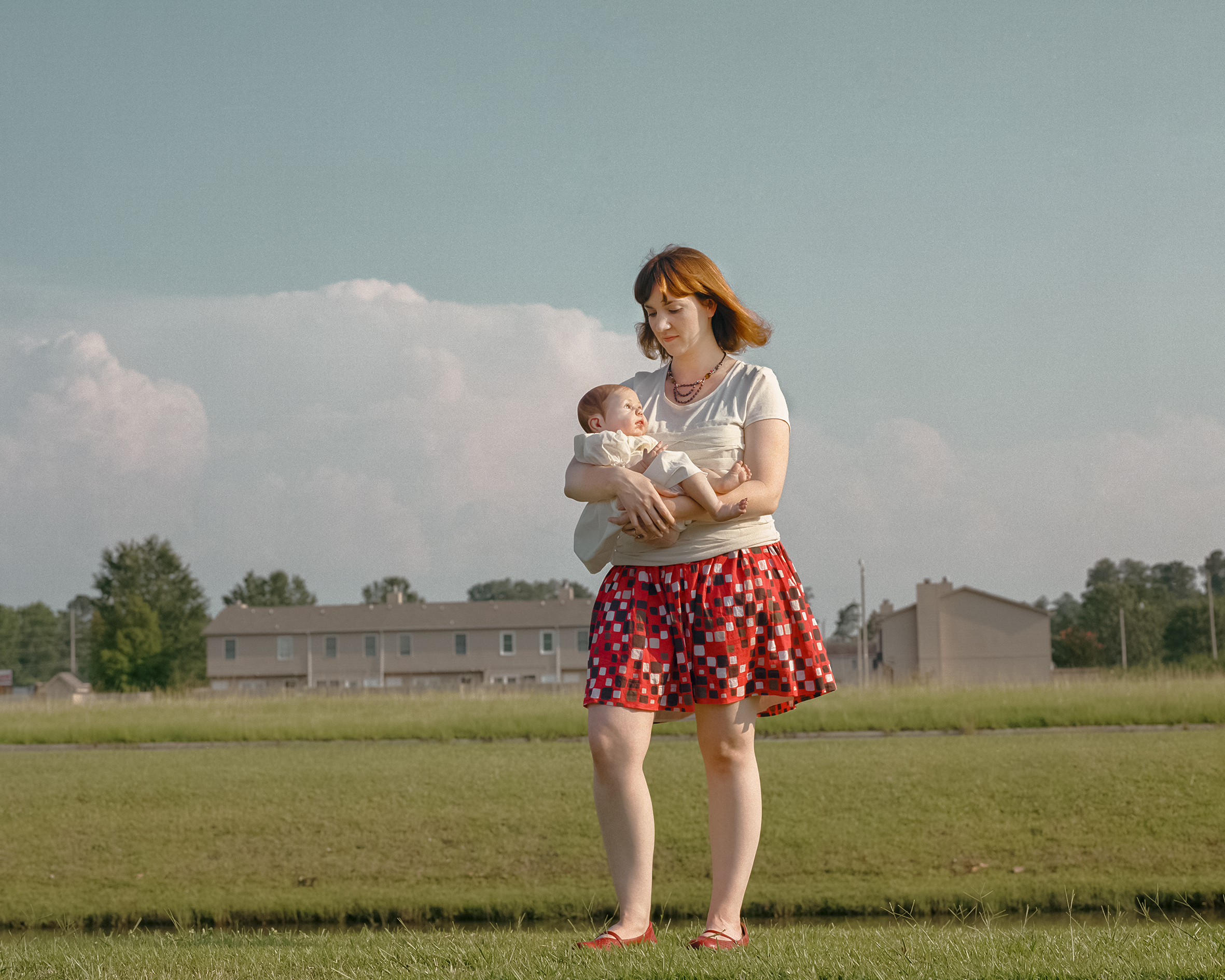Documenting unconventional love in the 21st century
- Text by Miss Rosen

In a culture where overexposure has become the new norm, intimacy and bonding is becoming increasingly complex. People adapt in any number of ways, adopting attitudes, behaviours, and even objects that allow them to channel the desire for love in a tangible way.
In the new exhibition Surrogate. A Love Ideal, opening February 21, American photographers Jamie Diamond and Elena Dorfman explore the expression of familial and romantic love between human and doll — an expression that elicits feelings of surprise, confusion, disgust, and even empathy from those who see it from the outside looking in.
“The dolls are so realistic when you see them, you inevitably have a visceral reaction whether you are repulsed or seduced,” says Diamond. Her series Forever Mothers (2012-2018) and Nine Months of Reborning (2014), portrays the lives of Reborners: a group of self-taught women artists who hand-make, collect, and engage with hyper-realistic baby dolls.
“Even extremely masculine men on the streets, the dolls would melt them,” she continues. “Their level of realism conjures up so much in you, triggering specific emotions relating to parenthood. Reborn dolls are used with Alzheimer patients as a form of therapy. It’s amazing: they release all these endorphins and oxytocin. They are memory triggers – and also comfort.”

Elena Dorfman. CJ 3, 2002. From Still Lovers

Jamie Diamond. 7.11.11, 2012. From I promise to be a good mother
Once immersed, Diamond embraced the Reborner culture, becoming a maker herself. “I was a doll collector all throughout my childhood,” she says. “Ultimately, it’s about nurturing. It’s make-believe, fantasy, and role-play. None of the women I have met are crazy and think the dolls are real.”
Diamond notes that there is a lot of sensitivity and privacy given to the members of the community, which is something Dorfman echoes. In her series Still Lovers (2001-04), Dorfman documented the domestic lives of men and women who share their homes with sex dolls.
“The assumption in the world is that there must be something wrong with the people who own them,” the photographer says. “At that time nobody had seen this kind of life before. The people who owned dolls were terrified to let someone in their homes. There was a deep fear of the neighbours finding out because the response has been very violent and shameful.”

Elena Dorfman. CJ & Taffy 5, 2002. From Still Lovers

Jamie Diamond. Mother Cherry, 2018. From I promise to be a good mother
“I hope that is shifting, as people are becoming more comfortable ways alternative ways of life, living, and loving other kinds of objects. It’s important to look at how the dolls are becoming, AI is literally upon us, and soon these dolls will be waking and talking. It’s not that far away.”
Both Diamond and Dorfman note that there is no prevailing archetype for adults who love dolls. Whatever their reason, they express love to an object that cannot judge them, and is fully receptive to the attention they are shown.
“I think we are uncomfortable with AI and robotics — it’s too real,” adds Diamond, when asked about the future. “We find it dystopian. People aren’t ready for this yet but in time they will be. This is only the beginning. “

Elena Dorfman. Ginger Brook 4, 2001. From the series, Still Lovers

Jamie Diamond. Mother Kyla, 2012. From Forever mothers

Elena Dorfman. Sidore 4, 2001. From the series Still Lovers

Jamie Diamond. 4.12.12, 2012. From I promise to be a good mother

Elena Dorfman. Galatea 4, 2002. From the series Still Lovers

Jamie Diamond. Mother Brenda, 2012. From Forever mothers

Elena Dorfman. Rebecca 1, 2001. From the series, Still Lovers
Surrogate. A Love Ideal is on view at Fondazione Prada in Milan through July 22, 2019.
Follow Miss Rosen on Twitter.
Enjoyed this article? Like Huck on Facebook or follow us on Twitter.
You might like

In Medellín’s alleys and side streets, football’s founding spirit shines
Street Spirit — Granted two weeks of unfettered access, photographer Tom Ringsby captures the warmth and DIY essence of the Colombian city’s grassroots street football scene.
Written by: Isaac Muk

Remembering New York’s ’90s gay scene via its vibrant nightclub flyers
Getting In — After coming out in his 20s, David Kennerley became a fixture on the city’s queer scene, while pocketing invites that he picked up along the way. His latest book dives into his rich archive.
Written by: Miss Rosen

On Alexander Skarsgård’s trousers, The Rehearsal, and the importance of weirdos
Freaks and Finances — In the May edition of our monthly culture newsletter, columnist Emma Garland reflects on the Swedish actor’s Cannes look, Nathan Fielder’s wild ambition, and Jafaican.
Written by: Emma Garland

Why Katy Perry’s space flight was one giant flop for mankind
Galactic girlbossing — In a widely-panned, 11-minute trip to the edge of the earth’s atmosphere, the ‘Women’s World’ singer joined an all-female space crew in an expensive vanity advert for Jeff Bezos’ Blue Origin. Newsletter columnist Emma Garland explains its apocalypse indicating signs.
Written by: Emma Garland

Katie Goh: “I want people to engage with the politics of oranges”
Foreign Fruit — In her new book, the Edinburgh-based writer traces her personal history through the citrus fruit’s global spread, from a village in China to Californian groves. Angela Hui caught up with her to find out more.
Written by: Angela Hui

We are all Mia Khalifa
How humour, therapy and community help Huck's latest cover star control her narrative.
Written by: Alya Mooro

